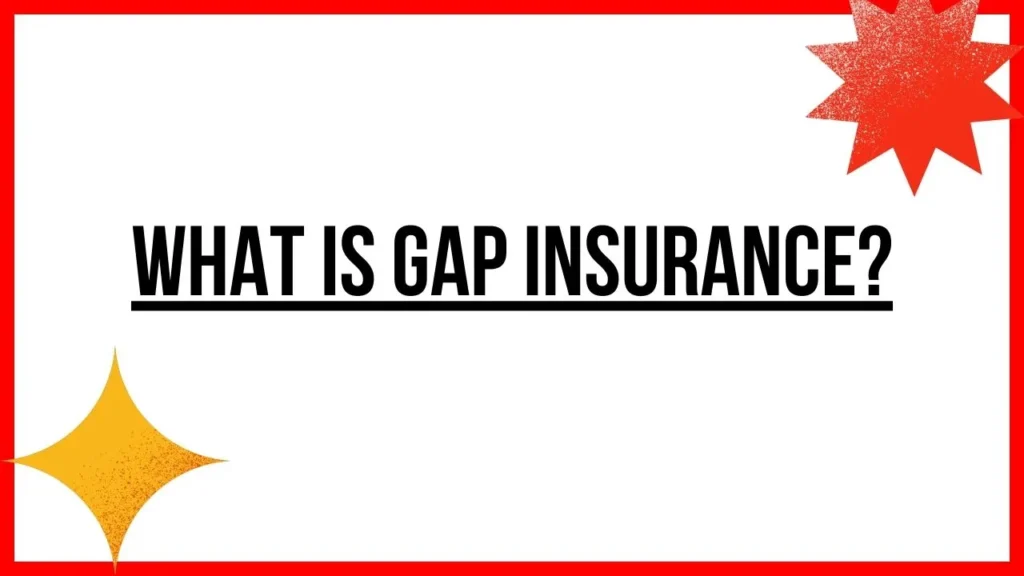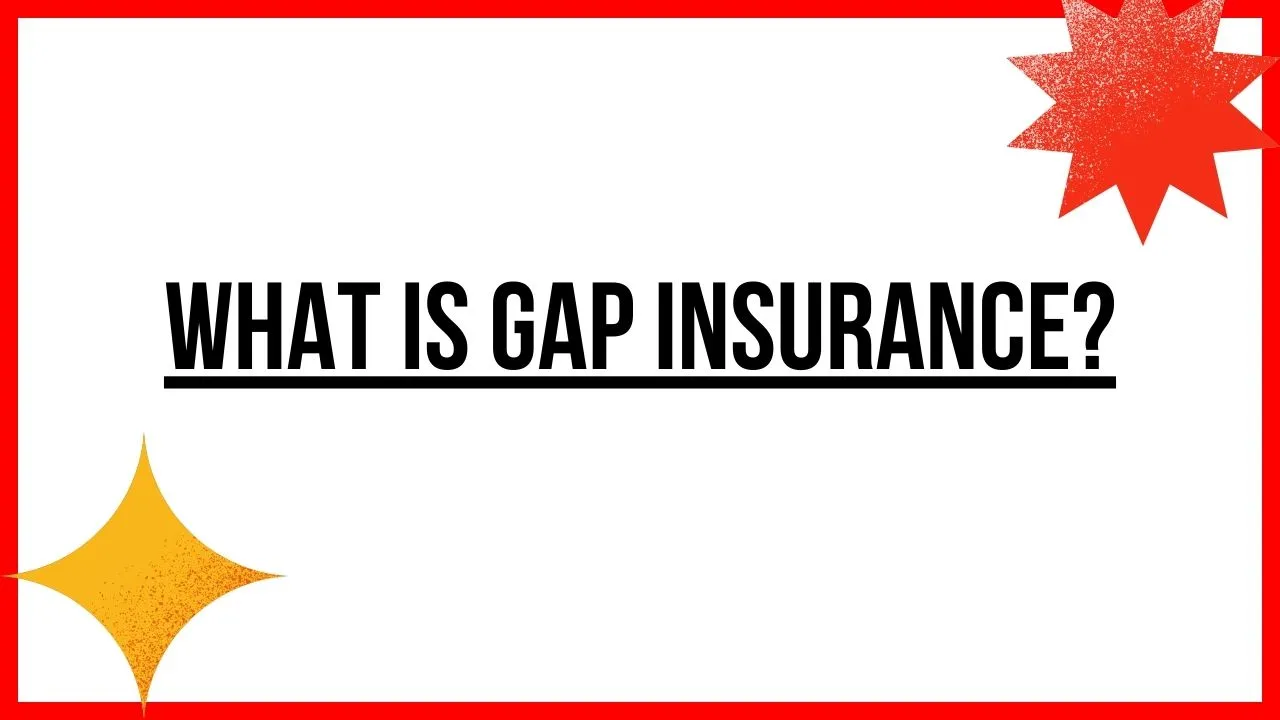Understanding Gap Insurance: Bridging the Financial Divide
In the complex landscape of auto insurance, one term that often surfaces is “Gap Insurance.” But what exactly is Gap Insurance, and why might it be a crucial consideration for vehicle owners? Let’s delve into the intricacies of this insurance coverage to unravel its purpose and benefits.
Defining Gap Insurance:
Gap Insurance, or Guaranteed Asset Protection Insurance, is a specialized form of coverage designed to fill the gap between what a vehicle owner owes on their car loan or lease and the actual cash value (ACV) of the vehicle. It comes into play when the ACV is lower than the outstanding loan or lease balance, typically in scenarios where a vehicle is declared a total loss due to theft or accident.
How Gap Insurance Works:
Consider a scenario where a car owner experiences a total loss event, such as a severe accident. The primary auto insurance policy would cover the vehicle’s actual cash value at the time of the incident. However, as vehicles depreciate over time, the ACV might be lower than the outstanding loan or lease amount. This is where Gap Insurance steps in, covering the difference between the ACV and the remaining balance on the loan or lease.

Why Gap Insurance is Important:
Depreciation Reality:
Vehicles start depreciating the moment they leave the dealership. In the early years of ownership, the depreciation rate can outpace the reduction in the loan balance, creating a gap that Gap Insurance helps bridge.
Loan and Lease Imbalance:
For those who finance or lease their vehicles, the outstanding balance on the loan or lease might exceed the vehicle’s actual value. Gap Insurance safeguards against financial losses in such situations.
Total Loss Scenarios:
Accidents, theft, or other incidents leading to a total loss can leave vehicle owners in a precarious financial position. Gap Insurance provides financial security by covering the disparity between the insurance payout and the remaining balance.
Lender Requirements:
In some cases, lenders may require Gap Insurance, especially when financing a vehicle with a low down payment or opting for an extended loan term.
How to Obtain Gap Insurance:
Through the Dealership:
Car buyers often have the option to purchase Gap Insurance at the dealership when financing a vehicle. It can be included in the loan package.
Auto Insurance Providers:
Many traditional auto insurance companies offer Gap Insurance as an additional coverage option. Vehicle owners can explore this option when setting up their insurance policies.
Specialized Gap Insurance Providers:
Some insurers specialize in offering Gap Insurance exclusively. Exploring options beyond the dealership or primary insurer can provide competitive rates and tailored coverage.
Considerations Before Opting for Gap Insurance:
Vehicle Value:
Evaluate the depreciation rate and estimated future value of the vehicle to determine if the potential gap justifies the additional insurance expense.
Loan Terms:
Longer loan terms may increase the likelihood of a gap between the vehicle’s value and the loan balance. Assess the impact of loan duration on the necessity for Gap Insurance.
Primary Insurance Coverage:
Understand the terms of the primary auto insurance policy, as some comprehensive coverages may partially address the gap in certain scenarios.
In Conclusion:
Gap Insurance serves as a financial safety net, protecting vehicle owners from the unforeseen financial repercussions of a total loss event. While it may not be necessary for every car owner, those with specific financing situations or concerns about potential depreciation gaps should carefully consider the merits of Gap Insurance. It’s a valuable tool that, when strategically applied, can provide peace of mind on the unpredictable road of vehicle ownership.
10 FAQs About Gap Insurance:
1. What is gap insurance?
Gap insurance, short for Guaranteed Asset Protection insurance, covers the difference between your car’s actual cash value (ACV) and the outstanding balance on your loan or lease if your car is totaled or stolen.
2. Why might I need gap insurance?
Cars depreciate quickly, often losing 20% of their value in the first year. So, if you have a small down payment or a long loan term, you could owe more on your car than it’s worth. In that case, standard insurance wouldn’t cover the full amount, leaving you responsible for the “gap.”
3. Who should consider gap insurance?
Gap insurance could be beneficial if you:
Made a small down payment (less than 20%)
Financed your car for a long term (over 60 months)
Leased your car (gap insurance is often required)
Bought a car that depreciates quickly
Rolled over negative equity from a previous loan
4. How much does gap insurance cost?
The cost varies depending on your car, loan terms, and insurer, but it’s typically around $200-$500 per year. Some dealerships offer gap insurance at purchase, but comparing quotes from different providers is recommended.
5. Where can I buy gap insurance?
You can buy gap insurance from your car insurance company, the dealership, or a third-party provider. Compare prices and coverage options before making a decision.
6. Are there different types of gap insurance?
Yes, there are two main types:
Replacement gap: Covers the difference between ACV and the cost of a comparable new car.
Return of lease value: Covers the difference between ACV and the lease payoff amount, plus any wear-and-tear charges.
7. Does gap insurance cover everything?
No, gap insurance typically doesn’t cover:
Mechanical breakdowns
Normal wear and tear
Cosmetic damage
Personal belongings in the car
8. Can I cancel gap insurance?
Yes, you can usually cancel gap insurance at any time, though you might be subject to cancellation fees. Consider if you still need it based on your current loan balance and car value.
9. Are there alternatives to gap insurance?
Making a larger down payment: Reduces the likelihood of having a gap in the first place.
Saving an emergency fund: Allows you to cover the gap yourself if needed.
Negotiating a lower loan-to-value ratio: May qualify you for better insurance rates without needing gap coverage.
10. Is gap insurance right for me?
Carefully consider your financial situation, car value, and loan terms before deciding. Consider talking to a financial advisor or insurance agent for personalized advice.

